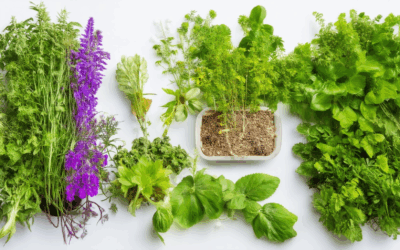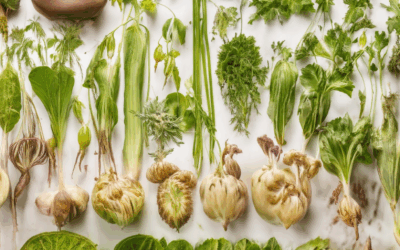Cultivating rare seeds is often seen as a mysterious art form, shrouded in intrigue and wonder. These unique plants, with their distinct characteristics and historical significance, hold a special place in the hearts of gardeners and enthusiasts alike. While many may marvel at their beauty and rarity, few understand the secrets behind their cultivation, the challenges they pose, and the opportunities they present. From profitability to propagation, rare seeds offer a world of possibilities that extend far beyond mere horticulture. In this article, we’ll explore the fascinating realm of rare seeds, delving into their origins, their economic potential, and the techniques needed to successfully cultivate them. Whether you’re a seasoned gardener or a curious newcomer, prepare to uncover the hidden treasures of these remarkable plants.
Key Takeaways
- Optimal Growing Conditions: Use a greenhouse, high-quality soil, and maintain consistent watering, fertilization, and companionship to cultivate rare seeds effectively.
- Germination Techniques: Enhance seed germination with methods like scarification, soaking, and the paper towel trick, ensuring proper medium and lighting.
- Rarity in Stardew Valley: Ancient Seeds are rare and challenging to obtain, requiring the Seed Maker and specific planting techniques outside pots.
Rare Seeds Profitability Overview
Rare seeds can be highly profitable, depending on various factors such as growth conditions, market demand, and cultivation techniques. In games like Stardew Valley, rare seeds often offer significant returns due to their limited availability and high value in crafting or selling.
Factors Influencing Profitability
- Growing Conditions: Rare seeds typically require specific environments, such as certain temperatures, humidity levels, and soil types. Proper care and optimal growing conditions can maximize yield and profit.
- Market Demand: The demand for rare seeds can vary widely. Some species may be sought after for specific uses in cooking, cosmetics, or ornamental purposes, driving up their value.
- Cultivation Techniques: Advanced farming methods, such as hydroponics or greenhouses, can significantly increase the productivity and profitability of rare seed cultivation.
Comparing to Common Crops
When compared to more common crops, rare seeds often command higher prices due to their uniqueness and perceived value. However, they may require more effort and resources to grow successfully.
Strategies for Success
- Research and Planning: Before investing time and resources, conduct thorough research on the specific rare seeds you wish to cultivate. Understand their requirements and potential profits.
- Optimal Growing Facilities: Consider building a greenhouse or controlled environment to simulate ideal conditions for rare seeds. This can enhance germination rates and overall yield.
- Diversification: Don’t rely on a single type of rare seed. Diversifying your crop can reduce risks and increase overall profitability.
Market Demand and Value
The profitability of rare seeds is further influenced by market demand. Some seeds, like those used in organic skincare products or gourmet cuisine, can fetch premium prices. Staying informed about emerging trends and consumer preferences can help you capitalize on these opportunities.
Conclusion
In summary, rare seeds can be extremely profitable, especially when cultivated under optimal conditions and with a good understanding of market demands. By employing effective strategies and leveraging available resources, you can maximize your returns while contributing to sustainable agriculture.
Learn more about rare seed cultivation techniques and explore our selection of heirloom and rare seeds.
How to Multiply Rare Seeds
To effectively multiply rare seeds like Sweet Gem Berry, follow these organized steps:
Step-by-Step Guide
- Preparation: Ensure your inventory has sufficient capacity to hold the seeds you plan to multiply.
- Collection Time: Collect the rare seeds during optimal hours, typically in the early morning or late afternoon, to maximize productivity.
- Bedtime Routine: Place the seeds securely in your inventory before retiring for the night. Ensure they are stored properly to maintain viability.
- Morning Processing: Rise early and visit your seed maker promptly after waking. Insert the seeds into the machine at approximately 06:20 to begin the multiplication process.
- Harvesting Rewards: By around 06:40, the process will complete, rewarding you with between 2 to 6 berries. This random reward system adds an element of excitement and variability.
Additional Tips
- Storage Advice: Store seeds in a cool, dry place to prevent germination issues. Consider using airtight containers for long-term storage.
- Crop Rotation: Rotate different types of seeds to maintain soil health and prevent pests from becoming resistant to your gardening methods.
- Plant Health Matters: Ensure your plants are healthy and well-nourished before harvesting seeds, as this directly impacts yield quality.
Intrinsic Factors
The number of berries harvested can be influenced by several intrinsic factors:
- Rarity Level: The rarer the seed, the higher the potential reward, though this may also affect the likelihood of successful multiplication.
- Seed Viability: Freshness and proper storage significantly affect germination rates and subsequent berry production.
- Environmental Conditions: Factors like temperature and humidity during the growing season can impact seed development and yield.
Best Practices
- Document Results: Keep track of each multiplication attempt to identify patterns and optimize future yields.
- Experiment with Varieties: Test different rare seed varieties to see which ones perform best in your specific environment.
- Seek Resources: Utilize guides from Old Seed for advanced techniques and tips to enhance your gardening efforts.
By following these guidelines and incorporating the provided tips, you can successfully multiply rare seeds and enjoy the rewards of your labor. Remember to always maintain proper care and storage practices to ensure the longevity and productivity of your seeds.
Why is it Illegal to Replant Seeds?
Replanting seeds is often restricted due to legal and ethical considerations surrounding intellectual property, environmental protection, and economic interests. Here’s a breakdown of the key reasons:
- Seed Patents : Many seeds are protected under intellectual property laws, particularly patents. These patents grant exclusive rights to the developers, preventing unauthorized use, including replanting. Violating a seed patent can result in legal action.
- Intellectual Property Rights : Beyond patents, breeders and companies invest significant resources into developing unique plant varieties. Protecting these investments ensures continued innovation and sustainability in agriculture.
- Genetic Pollution : Replanting seeds can lead to the spread of genetically modified organisms (GMOs), potentially contaminating non-GMO crops and harming organic production.
- Economic Impact : The seed industry relies on sales and licensing. Unauthorized replanting undermines this market, reducing revenue and discouraging investment in new seed varieties.
- International Laws : Various countries have strict regulations against replanting seeds without authorization, reflecting concerns over trade and market stability.
Farmers are encouraged to use approved seeds and to understand local regulations to ensure compliance while supporting sustainable farming practices.
How to Grow Rare Seeds
Rare seeds require special attention and optimal conditions to thrive. Here’s a step-by-step guide to successfully growing rare seeds:
- Planting Location : Rare seeds can be planted both outdoors and indoors. For the best results, consider using a greenhouse as they often require controlled environments to germinate and grow properly.
- Soil Preparation : Choose high-quality soil that drains well. Mix in organic matter like compost or aged manure to improve soil fertility and structure.
- Watering Technique : Water the seeds consistently but avoid waterlogging. Use a spray bottle or drip irrigation system to ensure even moisture distribution.
- Fertilization : Apply a balanced fertilizer at planting time and again during the growth phase. Use slow-release fertilizers to prevent over-fertilizing and burning the plants.
- Companionship : Plant companion crops like marigolds or nasturtiums to deter pests and enhance the growth environment.
- Pest Control : Monitor for common pests like aphids and spider mites. Introduce natural predators or use organic pesticides if necessary.
- Pruning : Regularly prune plants to remove dead branches and promote healthy growth. This also helps in improving air circulation around the plants.
- Harvesting : Harvest seeds when the pods mature and dry them properly before storing. Proper drying prevents mold and ensures viable seeds for next year.
For more detailed guides and resources on growing rare seeds, visit Old Seed . Explore our comprehensive gardening resources and learn about sustainable practices that can help you maximize your rare seed growth.
Don’t forget to check out these recommended resources:
- Heirloom Gardening 101 – Expert tips on cultivating heirloom and rare seeds
- Sustainable Seeds – Information on preserving and growing rare seed varieties
- Organic Gardeners Hub – Community-driven insights on organic seed cultivation
How to Trick Seeds to Germinate
Germinating seeds can sometimes be tricky, but with the right techniques, you can significantly improve your success rate. One common method involves scarification, but there are other effective tricks you can try to ensure your seeds sprout successfully.
- Scarification:** Lightly scratch or file the surface of the seed with a nail or sandpaper. This process helps soften the seed coat, allowing moisture to penetrate and kickstart germination.
- Soak Before Planting:** Some seeds benefit from a preliminary soak. Immerse them in water for 24 hours before planting to hydrate the seed and initiate germination.
- Use a Paper Towel Method:** Place seeds between two paper towels and moisten them. Put them in a warm place (around 70°F) and check daily. Replace the towels with fresh ones once they become dry to maintain moisture without rotting the seeds.
- Choose the Right Medium:** Sow seeds in high-quality potting mix or seed-starting formula, which provides the ideal environment for germination with proper drainage and nutrients.
- Optimal Location:** Keep seeds in a warm, dark place until germination begins. Avoid direct sunlight to prevent drying out.
- Consistent Watering:** Water gently from below to avoid disturbing the seeds. Ensure the soil remains consistently moist but not waterlogged.
- Light Exposure:** Once seeds have germinated and have a few leaves, introduce bright, indirect light to prevent leggy plants and promote healthy growth.
By using these tricks, you can enhance your seed germination rates and increase your chances of successful growth. For more tips and resources on heirloom gardening and sustainable practices, visit Old Seed .
How Rare Are Ancient Seeds?
Ancient Seeds in Stardew Valley are quite rare, adding an element of surprise and challenge to the game. When using the Seed Maker with any crop other than Ancient Fruit, there’s a 0.5% chance to obtain one packet of Ancient Seeds instead of the usual crop seeds. This low probability makes them a sought-after commodity among players.
Obtaining Ancient Seeds
- The primary method to obtain Ancient Seeds is through the Seed Maker, which drops them as a rare reward when used on non-Ancient Fruit crops.
- These seeds cannot be planted in Garden Pots, as indicated by the game’s mechanics, which adds another layer of complexity for players attempting to grow them.
Where to Find Ancient Seeds
Ancient Seeds are not available through normal farming methods or shop purchases. Players must rely on the rare chance of obtaining them via the Seed Maker. This rarity makes them a valuable resource in the game, often leading to competitive farm setups where players try to maximize their chances of obtaining these seeds.
Planting Ancient Seeds
- Ancient Seeds cannot be planted in Garden Pots, limiting their cultivation options.
- Players must plant them in open fields or use special farming techniques to successfully grow them.
Uses of Ancient Seeds
Ancient Seeds are highly regarded for their unique properties and are often used in farm designs to gain an edge over opponents. Their rarity also makes them a symbol of achievement, with many players striving to collect and grow them.
Competitors and Resources
While we focus on providing the best resources, we acknowledge other seed banks and organizations like Old Seed and Stardew Valley Wiki that also offer valuable information on heirloom gardening and seed preservation. These competitors contribute positively to the community and provide alternative sources for similar products.
Conclusion
Ancient Seeds are indeed rare, making them a fascinating aspect of Stardew Valley’s farming mechanics. Their acquisition requires patience and skill, making them a memorable part of the gameplay experience.








0 Comments